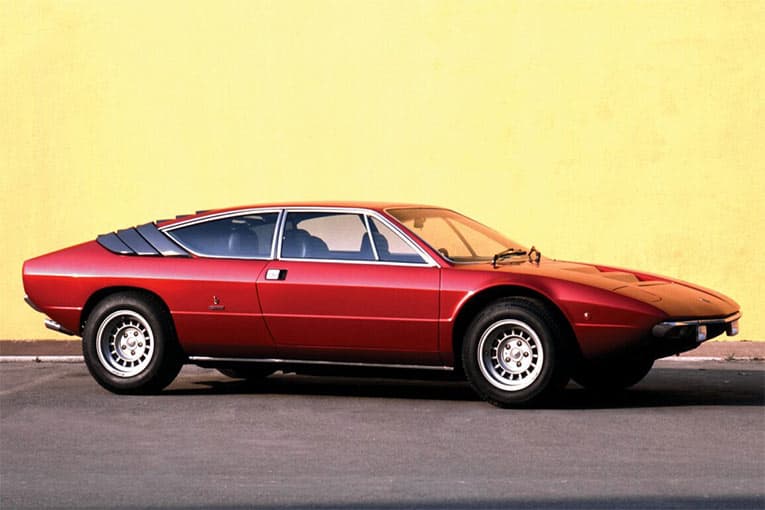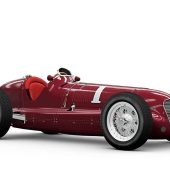To compete with the Ferrari Dino, Maserati Merak and Porsche 911, Lamborghini needed a new, smaller and cheaper car in the beginning of the 1970s. The answer to this need was a completely new car model, which was named Urraco. It was designed by Marcello Gandini, who worked at Bertone at the time and had already designed the Lamborghini Miura and the Espada. It was designed to be more spacious than its competitors so the 2-door coupe got 2+2 seating configuration. And to provide better performance, a V8 engine was installed.
Urraco had an all-steel body with the floor incorprorated into the body. The new model was 4250mm long, the height was 1115mm and the width 1720mm. The all-independent McPherson suspension used coil springs and telescopic dampers. All four corners had ventilated Girling disc brakes with double hydraulic circuit.

The 90 degree V8 had a displacement of 2463cc. It had a light-alloy and aluminium block, two valves per cylinder and the overhead camshafts were driven by a cog-belt. The engine was mid mounted and the gearbox and the differential were built in the same block with the engine. The 2.5-litre V8 produced 220 horsepower at 7500 rpm and 225 Newton metres of torque at 5750rpm. The power was delivered through 5-speed manual gearbox to the rear wheels. The top speed was 240 km/h and the Urraco could accelerate from zero to hundred in 6,9 seconds.
The Lamborghini Urraco was shown to the public for the first time on the Turin Auto Show in 1970. There were two cars on the display, but these were only prototypes and a lot of work was still needed until the the first Lamborghini V8 was ready for the road two years later. When the P250 was finally ready for delivery, it still had a few design faults and the overall workmanship could have been improved. The interior ergonomics weren’t too good and the visibility to the outside was quite bad, except straight ahead.
Some improvements were made when the Urraco S was introduced. The US-specification model was knows as Type III. It had big, black bumpers to the front and rear and altered tail lights. Because the U.S. anti-pollution equipment had to be installed, the Typo III was heavier and underpowered with 180 horsepower. When Urraco P250 production ended in 1976, 521 cars were manufactured.









